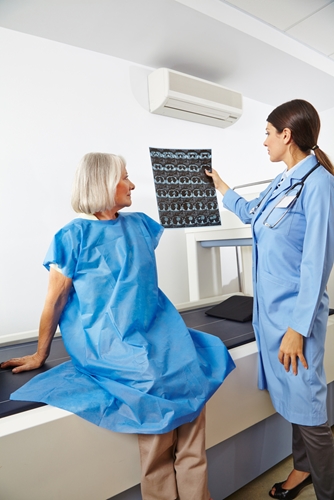The spread of teleradiology can be tied directly to two complementary factors: the increased patient demand for fast and accurate diagnostic services, and the relatively fixed supply of physicians capable of delivering those services. Teleradiology, via the electronic transmission of digitized images, allows each of those doctors to maximize the benefit they are able to provide patients, by minimizing the hurdles present in doing so. Below, find five reasons why this technology should be considered by any clinic that manages MRI's, CT scans, X-rays, ultrasounds or PET scans.
1. It saves money
@NdzaviD benefit of teleradiology to both physicians and clients is:reduced costs,faster diagnostics,improved patient care.#pitchforfunding
— Nonhlanhla (@nonhlan67278569) November 13, 2015
Traditionally, a radiologist would have to journey to where the image was taken to analyze it. This process is both time- and resource-consuming, and limits the number of places where a specialist can feasibly be located. Teleradiology, however, allows a doctor to be based virtually anywhere, in addition to cutting out expensive travel.
2. It promotes collaboration
If a doctor has to be physically present to analyze an image, collaboration can only occur when multiple physicians are able to be in the same place. Considering how busy the profession can be, such opportunities are necessarily limited. However, if patient results can be viewed remotely, multiple specialists can come together to determine a cause of treatment. Without having to transfer a patient, a clinic can solicit the opinion of a subspecialist that might have more focused knowledge in an area, such as pediatric or muscoskeletal radiology. This gives each doctor the benefit of the knowledge of his peers, without requiring that they physically be in the same room.
3. It helps rural areas receive care
More people who live in urban environments have access to doctors, particularly when it comes to specialists like radiologists. An article in The Atlantic detailed the extent of the shortage: While a city of 100,000 people would have 84 primary care physicians, that same number of people spread out over the countryside would have only 68.
This issue is exacerbated by the fact that rural people tend to be more spread out than their urban counterparts. For example, per the Census Bureau, there are about 2.6 million people in Brooklyn, New York, living together in an area that measures just under 70 miles. For comparison's sake, North Dakota covers an area more than a thousand times larger, with less than one third of the population. It stands to reason that a doctor in North Dakota has much larger territory than one in a busy urban center.
Teleradiology helps those rural practitioners, and the people for whom they provide care, by allowing them to expand their networks by communicating with other facilities. Instead of hiring more staff, which can be prohibitively expensive, these physicians can collaborate remotely via digital images, increasing the range of services that they are able to offer.
Our Leadership In Rural Medicine Program helps combat the rural doctor shortage: https://t.co/WqHAZQUAyW #SpartanMD pic.twitter.com/hulL3uCm7o
— MSU MD Admissions (@MSUMDAdmissions) May 19, 2016
4. It promotes education
Doctors are able to give presentations, explain outcomes and teach techniques remotely via teleradiology. Even a person who is not able to be physically present during one of these demonstrations can learn from it. Providing a platform to share knowledge better allows experts to leverage their experience, and impart it to those may be interested in learning.
5. It improves patient outcomes
All of the above benefits – cost savings, collaboration, care expansion and education – come together to provide a better standard of care for each patient. Cutting down on travel time means that physicians have more time to spend on the people that they are treating. Communicating information across specialties increases the diversity of viewpoints, and reduces the amount that patients have to be shuttled back and forth. Saving money on radiology costs means that clinics can pass those savings along to the patients, increasing satisfaction scores and the amount of treatment options that are available.
With teleradiology, far more people have access to critical and potentially life-saving diagnostic tools, around the clock, even if they happen to be located in an area that is currently underserved by specialists. Dr. Michael Meyers, writing in Diagnostic Imaging, summed up the overall benefits of moving to teleradiology succinctly:
"Finally and most importantly, a practice can simply run smoother if the juggling of staff can be mitigated by working with a teleradiologist. The fact is, these specialists are accustomed to working unusual hours and have adapted to the rigors of the process."
Ronny Bachrach
Latest posts by Ronny Bachrach (see all)
- Konica Minolta Debuts First-of-Its-Kind Digital U-Arm System at AHRA - July 27, 2016
- Researchers Detect Signs Of Stroke Risk Using MRI - June 27, 2016
- Imaging Biz: Q&A with David S. Channin MD: How to Make PACS Patient Centered - June 22, 2016










